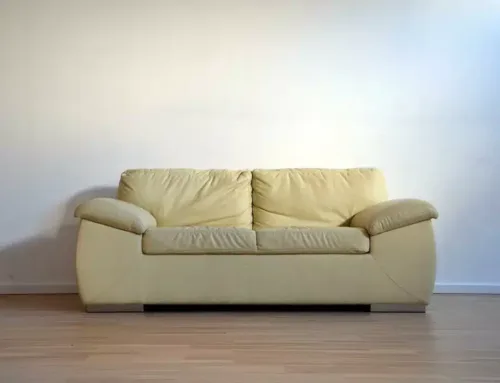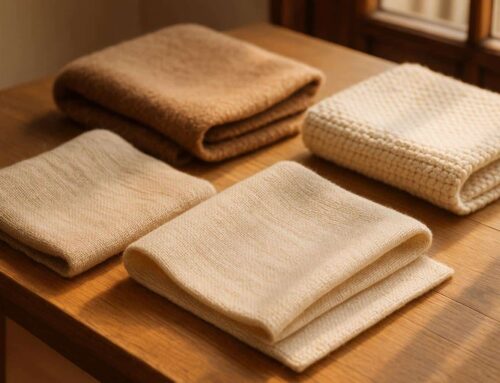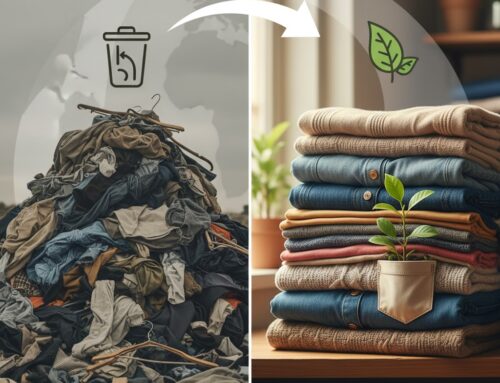Thrift stores help reduce waste by giving unwanted items a second life instead of letting them end up in landfills. Every year, millions of tons of usable clothing and goods are discarded in the U.S., contributing to pollution and wasted resources. By donating or shopping secondhand, you can:
- Reduce landfill waste: 85% of textiles are thrown away annually, but thrift stores recover and resell many of these items.
- Lower your carbon footprint: Secondhand shopping avoids the environmental cost of producing new goods.
- Support your community: Many thrift stores fund local programs like poverty relief through their sales.
- Conserve resources: Reusing items saves water, energy, and materials that go into manufacturing.
Thrift stores sort, resell, and recycle donations, often partnering with recycling facilities to handle unsellable goods responsibly. Every purchase or donation helps reduce waste, conserve resources, and support local initiatives.
The Problem: Usable Goods Filling Landfills
Every year, Americans generate a staggering 16 million tons of textile waste – over 103 pounds per person. This contributes to the 292 million tons of municipal solid waste produced in 2018, with the average individual discarding 4.9 pounds of trash daily. While the U.S. makes up just 4% of the global population, it is responsible for more than 12% of the world’s trash. These numbers highlight an urgent need to redirect usable goods away from landfills.
Shockingly, much of what ends up in landfills is still usable. In 2018 alone, 11.3 million tons of textile waste were dumped into landfills – representing 85% of all textiles discarded that year. Only 14.7% of textiles were recycled, amounting to just 2.5 million tons.
The Impact of Landfill Waste
When usable goods are thrown away, the consequences aren’t limited to overflowing landfills. Open landfills are responsible for 20% of human-caused methane emissions, and methane traps heat over 80 times more effectively than carbon dioxide. On top of that, landfills pollute water sources with leachate – liquid containing harmful substances like ammonia and mercury. They also release toxins into the air and soil, creating health risks for nearby communities. Research shows that greenhouse gas emissions from 70 U.S. landfills are, on average, 77% higher than Environmental Protection Agency (EPA) estimates.
The human toll is alarming. A study in New York found that families living within a mile of hazardous waste landfills faced a 12% higher risk of congenital malformations in their children. Property values also take a hit, with homes near large landfills losing an average of 12.9% of their value.
Beyond the environmental and health impacts, discarding usable goods wastes the resources and energy invested in producing them. It’s a cycle of unnecessary loss.
Why Usable Items Are Often Thrown Away
So, why are so many perfectly good items tossed out? The answer often comes down to convenience. It’s simply easier to throw something away than to donate it.
“A lot of folks just sit stuff on the curb rather than go through it simply because it’s easy.” – Chuck Finley
Many people also overestimate how hard it is to find someone who might want their unwanted items. Items with minor wear or damage are often assumed to be worthless, even though others could still use them. Lack of awareness about donation options adds to the problem – many people don’t know where to donate or worry about restrictions and regulations.
The numbers back this up: 66% of Americans won’t recycle a product if it’s inconvenient. The time and effort required to sort, pack, and transport items to donation centers can feel like too much for busy households.
As Lisa M. Byers explained,
“The problem is finding someone willing to take the stuff”.
Social factors also play a role. Emotional attachments make it hard to part with items, and some people worry about the perceived stigma of secondhand goods.
The result? A staggering 62% of waste discarded by homes and businesses in the U.S. ends up in landfills or incinerators. This includes millions of tons of items that could have been reused, repurposed, or donated. Tackling these challenges is a critical step in reducing waste and improving waste diversion strategies.
How Thrift Stores Divert Items from Landfills
Thrift stores play a vital role in keeping usable items out of landfills by sorting, reselling, and recycling donations. This process not only reduces waste but also turns discarded items into resources that benefit local communities. Here’s how it all works.
Donation Processing Systems
Every donated item starts its journey with a thorough intake and sorting process. Staff carefully evaluate items to decide whether they can be resold, recycled, or repurposed. Donations are categorized into groups like clothing, household goods, electronics, and media, with specific criteria for each type:
| Category | Sorting Criteria |
|---|---|
| Clothing | Gender, type (shirts, pants, dresses), season, condition (tears, stains, missing buttons) |
| Household Items | Function (kitchenware, décor, cleaning supplies), overall condition |
| Electronics | Working vs. broken, functionality, presence of accessories |
| Books, Media, Toys | Type, damage (e.g., broken covers, missing pages/discs) |
Efficiency is key to this process. For instance, some stores use quick quality checks like a “sniff test” to identify items with odors, which are then discarded. To streamline operations, many thrift stores also designate specific drop-off hours and locations for donations.
Extending Product Lifecycles Through Resale
After sorting, items that meet quality standards are put up for resale. By selling second-hand clothing, furniture, toys, and household goods, thrift stores give these items a second chance at life. A great example is City Thrift, which serves Kansas City residents while using the proceeds to fund programs through City Union Mission.
This approach is essential because only about 25% of donated clothing is sold. Still, by reselling even a fraction of these items, thrift stores help combat the staggering statistic that 85% of textiles in the U.S. end up in landfills each year.
Responsible Management of Unsellable Items
Not everything donated can be sold, but thrift stores have creative solutions to minimize waste. Some organizations divert millions of pounds of materials annually by employing innovative recycling and repurposing strategies. For example, unusable textiles like old shirts or towels are turned into wiping cloths.
Electronics that can’t be sold are often refurbished, while non-functional computers are wiped clean and recycled to recover valuable components. Other items, such as kitchenware, electronic wires, shoes, and stuffed animals, are sold in bulk to organizations that can repurpose them. Even materials like cardboard, metal, and plastic are sent to recycling centers when no other options are available.
These efforts are made possible through partnerships with recycling facilities and charities, ensuring that even unsellable items are handled responsibly.
The Broader Impact of Thrift Stores
Thrift stores do much more than keep items out of landfills. They bring environmental benefits, strengthen local communities, and promote sustainable habits across the United States. These efforts start with processing and repurposing donated goods but extend far beyond.
Benefits of Waste Diversion
Thrift stores address a major issue: textile waste. On average, each American throws away about 70 pounds of clothing and textiles every year. By giving these items a second chance, thrift stores significantly reduce this waste.
The environmental impact doesn’t stop there. Choosing second-hand clothing over new items cuts carbon emissions by an average of 25%. Plus, every thrifted piece saves resources – like the staggering 700 gallons of water it takes to produce a single cotton shirt.
“Each garment purchased second-hand is one less item heading to a landfill, thereby significantly decreasing waste production.” – Fort Bend Women’s Center
Thrift stores also support a circular economy, where goods are reused and repurposed rather than tossed out. This approach conserves natural resources by lowering the demand for new materials and reducing the energy used in manufacturing. The second-hand clothing market is even projected to grow nine times faster than the overall retail clothing sector by 2027. These environmental wins set the stage for meaningful community support.
Community Support Through Thrift Store Sales
The impact of thrift stores goes beyond environmental progress – they’re also engines for local change. Revenue from thrift store sales often funds charitable programs and community initiatives. Many thrift stores operate as non-profits, using their earnings to tackle pressing social issues. For instance, City Thrift directs proceeds from selling second-hand clothing, furniture, and household items to City Union Mission, which focuses on homelessness and poverty relief. Every purchase helps improve the lives of people in need.
Encouraging Community Involvement
Thrift stores provide easy ways for people to make a difference. Shopping second-hand is one of the simplest ways to support local causes while reducing waste. In 2019, the resale market was valued at $28 billion, highlighting its growing popularity. Donating unwanted items ensures thrift stores have quality inventory while keeping usable goods out of landfills.
Organizations like City Thrift also offer volunteer opportunities, inviting community members to contribute their time and skills to support local programs. Others choose to give financial donations, directly supporting missions like poverty relief and homelessness assistance. As more people become aware of these benefits, practices like upcycling and repurposing thrifted items are gaining traction, further amplifying the positive environmental impact.
Supporting Waste Reduction Through Thrift Stores
Thrift stores play a crucial role in reducing waste by redirecting millions of usable items away from landfills. This not only lightens the load on overflowing landfills but also sparks meaningful improvements within local communities.
Opting for secondhand shopping has a significant environmental impact – reducing carbon footprints by 82% and bypassing the resource-heavy processes of manufacturing. For example, producing a single pair of jeans can require as much as 1,800 gallons of water. Every time you choose a secondhand item, you help keep goods in use while contributing to environmental conservation.
But the impact doesn’t stop there. These efforts often ripple out to benefit individuals in need. Take City Thrift in Kansas City, for instance – its proceeds support programs addressing homelessness and poverty, showing how environmental action can intersect with social change.
To make a difference, consider donating or shopping secondhand. Before donating, ensure items are in working condition to avoid disposal fees, which can cost around $45 per ton. When shopping, focus on thoughtful purchases that fulfill your needs, rather than using thrift stores as a substitute for fast fashion overconsumption.
With thousands of thrift stores across the country, every donation, purchase, or volunteer effort contributes to a more sustainable and community-oriented way of living. By participating, you help extend the life cycle of goods and support local initiatives, reinforcing the shared goal of a greener, stronger community.
FAQs
How do thrift stores decide which donated items to sell or recycle?
Thrift stores take a meticulous approach when handling donations, focusing on condition, cleanliness, and functionality. Items that meet these standards are placed on the sales floor, ready to find a new home. This process not only gives items a second chance but also helps cut down on waste.
For donations that can’t be sold, many thrift stores turn to recycling. Unsellable textiles might be transformed into fibers, rags, or even insulation. Some items are sent overseas or processed through specialized recycling programs, ensuring minimal waste ends up in landfills. Through these efforts, thrift stores play a vital role in extending the life of goods and reducing environmental impact.
Why do some people throw away items that could still be donated?
Many people think thrift stores only take items in flawless condition, causing them to toss perfectly usable things. In truth, stores like City Thrift welcome a variety of gently used items – clothing, furniture, toys, and household goods – as long as they’re clean and in working order.
Another myth is that donating takes too much time or effort. In reality, most donation processes are quick and hassle-free, with many stores offering convenient drop-off points. Choosing to donate instead of throwing items away not only cuts down on waste but also supports local communities and gives your belongings a new purpose.
How does shopping at thrift stores help the environment and conserve resources?
Shopping at thrift stores is a smart way to make a positive impact on the environment. When you buy second-hand items, you’re cutting back on the demand for new production. This means fewer greenhouse gas emissions and less use of resources like water and energy. Plus, thrift stores give a second life to clothing, furniture, and other goods, keeping them out of landfills and encouraging a cycle of reuse.
Each thrift store purchase helps reduce waste and promotes thoughtful consumption. Take stores like City Thrift, for instance – they offer affordable second-hand items while also supporting their communities through donations and charitable programs. These combined efforts benefit both the planet and the people around us.






